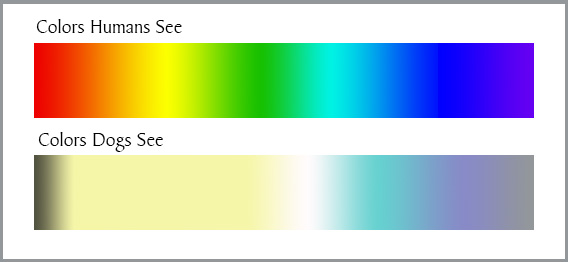Can Eating Raw Yeast Make You Sick?
Yeast is a type of fungus used in baking and brewing to make bread, beer, and other fermented products. It is a popular ingredient in many recipes and can be found in various forms, including dry, fresh, and instant. However, some people may wonder if eating raw yeast can make them sick. Let's explore this topic further.
What is Yeast?

Yeast is a single-celled microorganism that belongs to the fungi kingdom. It is a vital ingredient in the fermentation process because it consumes sugar and produces carbon dioxide, which causes dough to rise and gives bread its fluffy texture. Yeast is also used in the production of beer, wine, and other alcoholic beverages.
Is Eating Raw Yeast Safe?

Eating raw yeast is generally safe for most people. However, it may not be suitable for everyone, especially those with weakened immune systems, as raw yeast can contain harmful bacteria or other microorganisms that can cause foodborne illness.
Moreover, consuming too much raw yeast can lead to bloating, gas, and other digestive problems. Yeast contains enzymes that break down carbohydrates, which can cause a buildup of gas in the stomach and intestines, leading to discomfort and even pain.
What Happens When You Eat Raw Yeast?

If you eat raw yeast, it may cause some mild symptoms such as bloating, gas, and stomach discomfort. However, in rare cases, it can cause more severe symptoms such as fever, vomiting, and diarrhea.
Additionally, if you consume raw yeast regularly, it can lead to an overgrowth of yeast in your body, which can cause a yeast infection. A yeast infection is a common fungal infection that can affect various parts of the body, including the mouth, throat, genitals, and skin.
How to Use Yeast Safely
If you want to use yeast in your recipes, it is essential to use it properly to avoid any health risks. Here are some tips to use yeast safely:
- Always check the expiration date of the yeast before using it.
- Store yeast in a cool, dry place.
- Use the recommended amount of yeast in your recipe.
- Do not eat raw yeast.
- Do not use yeast that has an unusual smell or appearance.
The Bottom Line

Eating raw yeast can cause mild symptoms such as bloating and gas, but it is generally safe for most people. However, it is essential to use yeast properly and to avoid consuming too much raw yeast. If you experience severe symptoms after eating raw yeast, seek medical attention immediately.
Remember to always use yeast safely and follow the recommended guidelines to prevent any health risks.
Related video of Can Eating Raw Yeast Make You Sick?
Can Dogs See All Colors
Dogs are known for their exceptional sense of smell and hearing, but what about their vision? Can they see all the colors that humans can see? This is a question that has puzzled many pet owners, and in this article, we will explore the topic in-depth.
Understanding Color Vision

Color vision is the ability to perceive different wavelengths of light, which are interpreted by the brain as different colors. Humans have three types of color receptors in their eyes, called cones, which allow us to see a wide range of colors. These cones are sensitive to red, green, and blue light, and our brain combines the information from these cones to create the full spectrum of colors that we can see.
Dogs, on the other hand, have only two types of cones in their eyes, which means that they have a limited color vision. Their cones are sensitive to yellow and blue light, so they can see some shades of these colors, but they cannot distinguish red and green hues.
How Dogs See the World

While dogs may not see the world in the same way that humans do, their vision is still highly developed and allows them to navigate their environment with ease. Dogs have a wider field of vision than humans, and their eyes are more sensitive to low light levels, which makes them excellent at seeing in the dark.
Dogs also have a keen sense of motion detection, which is why they are able to track moving objects so well. This is because their eyes are designed to detect movement, and they have a wider range of peripheral vision than humans.
How Color Blindness Affects Dogs

Color blindness is a genetic condition that affects both dogs and humans. Dogs can be born with color blindness, or it can develop later in life due to age or disease. Color blindness in dogs is more common in certain breeds, such as Australian Shepherds and Siberian Huskies.
While color blindness may seem like a disadvantage, it does not usually affect a dog's quality of life. Dogs rely more on their sense of smell and hearing than their vision, so their color vision is not as important to them as it is to humans.
Conclusion
In conclusion, dogs cannot see all colors, but they can still see well enough to navigate their environment and perform their daily tasks. While color vision may not be as important to dogs as it is to humans, it is still interesting to understand how our pets perceive the world around them.
Related video of Can Dogs See All Colors
Can Dogs Eat Milk Chocolate?

As a dog owner, it's natural to want to share your food with your furry friend. However, not all human foods are safe for dogs to eat. One of the most common questions asked by dog owners is whether dogs can eat milk chocolate. In this article, we'll explore the dangers of feeding your dog milk chocolate and what to do if your dog accidentally eats it.
Why is Milk Chocolate Dangerous for Dogs?

Milk chocolate contains a substance called theobromine, which is toxic to dogs. Theobromine is a type of methylxanthine that affects the central nervous system and the cardiovascular system. Dogs are unable to metabolize theobromine as efficiently as humans, which means that even small amounts of milk chocolate can be dangerous for them.
The severity of the symptoms depends on the amount of theobromine ingested and the size of the dog. In general, small dogs are more susceptible to chocolate toxicity than larger dogs. Symptoms of chocolate toxicity may include vomiting, diarrhea, restlessness, rapid breathing, increased heart rate, seizures, and even death in severe cases.
What to Do if Your Dog Eats Milk Chocolate?

If you suspect that your dog has eaten milk chocolate, it's important to act quickly. The first thing you should do is to call your veterinarian or a veterinary emergency clinic. They will ask you about the type of chocolate your dog ate, the amount ingested, and the time it was consumed.
If the amount ingested is small and your dog is otherwise healthy, your veterinarian may recommend monitoring your dog for symptoms and providing supportive care, such as intravenous fluids and anti-nausea medication.
If the amount ingested is large or your dog is showing symptoms of chocolate toxicity, your veterinarian may recommend inducing vomiting or performing gastric lavage to remove the chocolate from your dog's stomach. They may also administer activated charcoal to help absorb the remaining theobromine in your dog's digestive system.
What Other Types of Chocolate are Dangerous for Dogs?

Milk chocolate is not the only type of chocolate that is dangerous for dogs. Dark chocolate and baking chocolate contain higher levels of theobromine and are therefore more toxic to dogs. White chocolate contains very little theobromine and is not considered toxic to dogs, although it's still not recommended to feed it to them.
If you're unsure whether a particular type of chocolate is safe for your dog to eat, it's best to err on the side of caution and avoid feeding it to them altogether.
Conclusion
In conclusion, dogs should not eat milk chocolate or any other type of chocolate. Theobromine toxicity can be life-threatening for dogs, and it's important to act quickly if you suspect that your dog has consumed chocolate. As a responsible dog owner, it's important to keep all chocolate and other potentially dangerous foods out of reach of your furry friend.
Related video of Can Dogs Eat Milk Chocolate?
Can Dogs Eat Black Grapes?

Dogs are known to be man's best friends. As pet owners, we always want to give the best to our furry friends, including their food. However, when it comes to feeding dogs, we must be careful about what we give them. One question that often arises is whether dogs can eat black grapes. In this article, we will discuss this topic in detail.
What are Black Grapes?

Black grapes are a type of grape that is dark purple in color. They are commonly used to make wine and are also eaten as a fruit. Black grapes are rich in nutrients such as vitamins, minerals, and antioxidants, making them a healthy food option for humans. However, when it comes to dogs, the situation is different.
Why are Black Grapes Dangerous for Dogs?

Black grapes, as well as other types of grapes and raisins, can be toxic to dogs. The exact reason why grapes are toxic to dogs is still unknown, but it is believed that they contain a substance that can damage the kidneys. The symptoms of grape poisoning in dogs include vomiting, diarrhea, lethargy, and loss of appetite. In severe cases, it can lead to kidney failure, which can be fatal.
What to do if Your Dog Eats Black Grapes?

If your dog accidentally eats black grapes, it is essential to act immediately. The first step is to induce vomiting by giving your dog hydrogen peroxide. However, this should only be done under the guidance of a veterinarian. After vomiting, take your dog to the vet immediately. The vet will perform tests to determine if there has been any damage to the kidneys and provide appropriate treatment.
What are the Alternatives to Black Grapes?

While black grapes are not safe for dogs, there are many other fruits that dogs can eat. Some of the safe fruits for dogs include apples, bananas, blueberries, strawberries, watermelon, and mango. However, it is important to remember that fruits should only be given to dogs in moderation and should not replace their regular diet.
Conclusion
In conclusion, black grapes are not safe for dogs to eat. They can be toxic and lead to kidney failure. If your dog accidentally eats black grapes, it is essential to take immediate action by inducing vomiting and taking them to the vet. While there are many other fruits that dogs can eat, it is important to remember that fruits should only be given to dogs in moderation and should not replace their regular diet.
Related video of Can Dogs Eat Black Grapes?
Can Deaf People Hear Themselves Think?

Deafness is a condition where a person is unable to hear sounds. It is estimated that around 466 million people globally have hearing loss. One common question asked by people is whether deaf people can hear themselves think. Let's explore this topic further.
How Do Deaf People Think?
Just like hearing people, deaf people also have an internal monologue, which is also known as thinking to oneself. However, the difference is that deaf people do not hear their thoughts in the form of sounds as they are unable to hear. Instead, they visually imagine their thoughts in the form of sign language, images, or written words.
Can Deaf People Hear Voices in Their Head?

People who can hear often hear their own voice or the voice of others in their head when they think. Deaf people, on the other hand, do not hear any voices in their head as they have never heard any sound. Instead, they have a visual representation of the voice they know, which is usually in the form of sign language, text, or images.
Is Deafness a Barrier to Thinking?

No, deafness is not a barrier to thinking. Deaf people are capable of thinking just like hearing people. In fact, some studies show that deaf people have better visual-spatial skills than hearing people which means they can visualize objects and space better than hearing people. This is because deaf people rely more on visual cues to communicate and understand their environment.
Conclusion
In conclusion, deaf people can think just like hearing people. However, the way they think is different as they do not hear their thoughts in the form of sounds. Instead, they visualize their thoughts in sign language, images, or written words. Deafness is not a barrier to thinking and deaf people have their unique strengths and abilities.